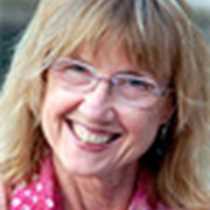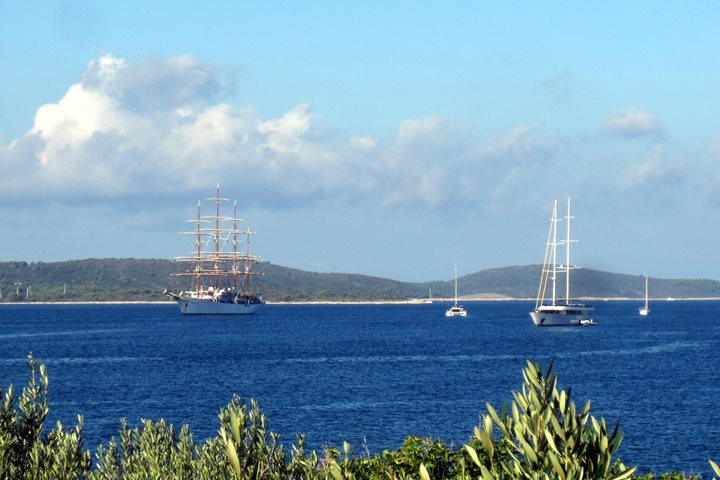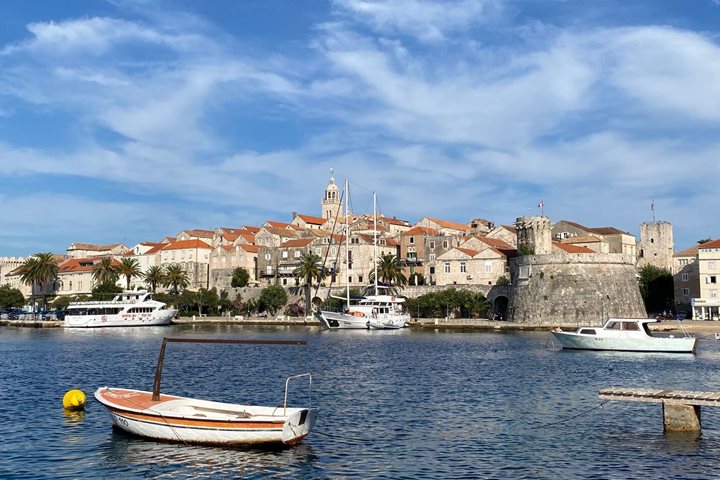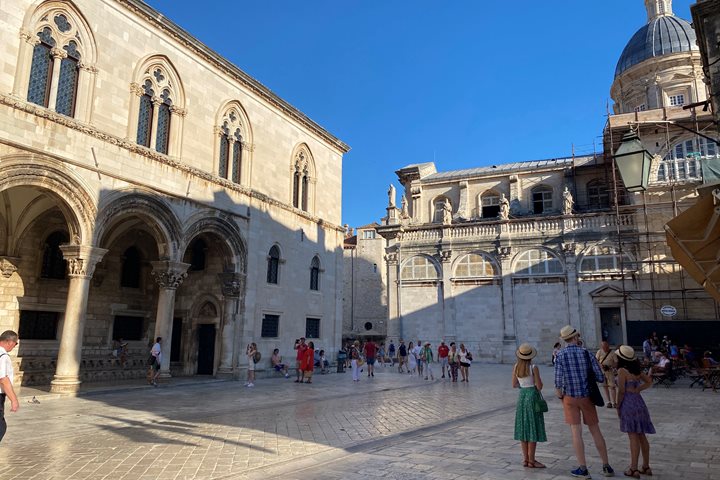National Geographic Expert Grace Fielder was rewarded for her early rising this morning when she caught sight of a dolphin swimming alongside the ship. A good omen indeed. After a delicious breakfast of Austrian pancakes and weisswurst, we set out in the Sea Cloud’s tenders to explore the UNESCO World Heritage site of Butrint. Our guides Loretta and Shpressa helped us make sense of the wildcat building boom that has taken place in Sarande, which has resulted in an overwhelming number of new hotels and restaurants (both completed and not). Sarande (from the Greek word for 40, referring to the 40 saints who lived in a nearby monastery) is located on the Albanian Riveria just a swim away from the Greek island of Corfu. This is a transitional region with both Muslim and Orthodox Christian (including a Greek minority). The foundations of the fifth century synagogue is further evidence of the religious mix in this area. The drive along the coast to Butrint was picturesque and took us past agricultural land, sheep grazing in open fields, olive groves, and mussel farms. Jaunty sea squills were springing up all over the hillsides and the three islands of the sea resort Ksamil beckoned attractively.
Butrint is a fascinating, only partially excavated archaeological site settled by Greeks in the sixth century B.C. and became a major trading hub. The Romans were next and in typical Roman fashion built a number of baths and turned Butrint into something of an ancient spa town. Subsequent inhabitants of this strategic site were Byzantines (they built the basilica and the baptistery with its exquisite mosaics, covered up for now until they can be displayed safely), then Venetians who built a fortress on top of the acropolis and finally the Ottoman Empire (Ali Pasha’s triangular fortress lays across the channel connecting the brackish lake and the Ionian Sea). The name of Butrint comes from “wounded bull” and there is a magnificent stone gate with a lion killing a bull marking the entrance to the fortified portion of the ruins. The museum up top is small, but very well laid out with instructive signage guiding the visitor through the centuries of the history held in these ruins. One could easily spend hours here exploring these ruins at risk of being submerged by a jungle of vegetation (laurel trees, several varieties of oaks, vines, rosemary, and the ever encroaching water from the nearby brackish channel that connects it with the Straits of Corfu).
Our next stop was the Ottoman Castle of Lekuris (which also has some unexpected Byzantine frescoes, probably the remnants of a small church on the site). Sporting several bunkers Lekuris Castle has panoramic views of the countryside and the Corfu Straits as well as traditional Albanian hospitality. In addition to local beer and wines, there was a generous spread of mezze: pickled vegetables, olives, cheese, fruits, and the local specialty—a dense white cornbread. Vendim and his son Brian serenaded us with traditional Albanian tunes played on his great-grandfather’s brass flute for a complete sensory experience. Eyes, ears, and mouths delighted, we returned to the Sea Cloud for a magnificent buffet lunch that included fresh grilled calamari and Montenegrin smoked pršut. The rest of the day was spent enjoying the Sea Cloud, lazing on her decks as we sought out favorable winds for sailing. After a refreshing afternoon tea (including iced coffee and fresh Apfelstrudel), Tom presented the intriguing story of this marvelous sailing ship followed by a champagne reception and tour of the original cabins.







